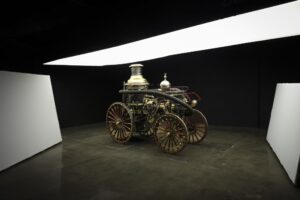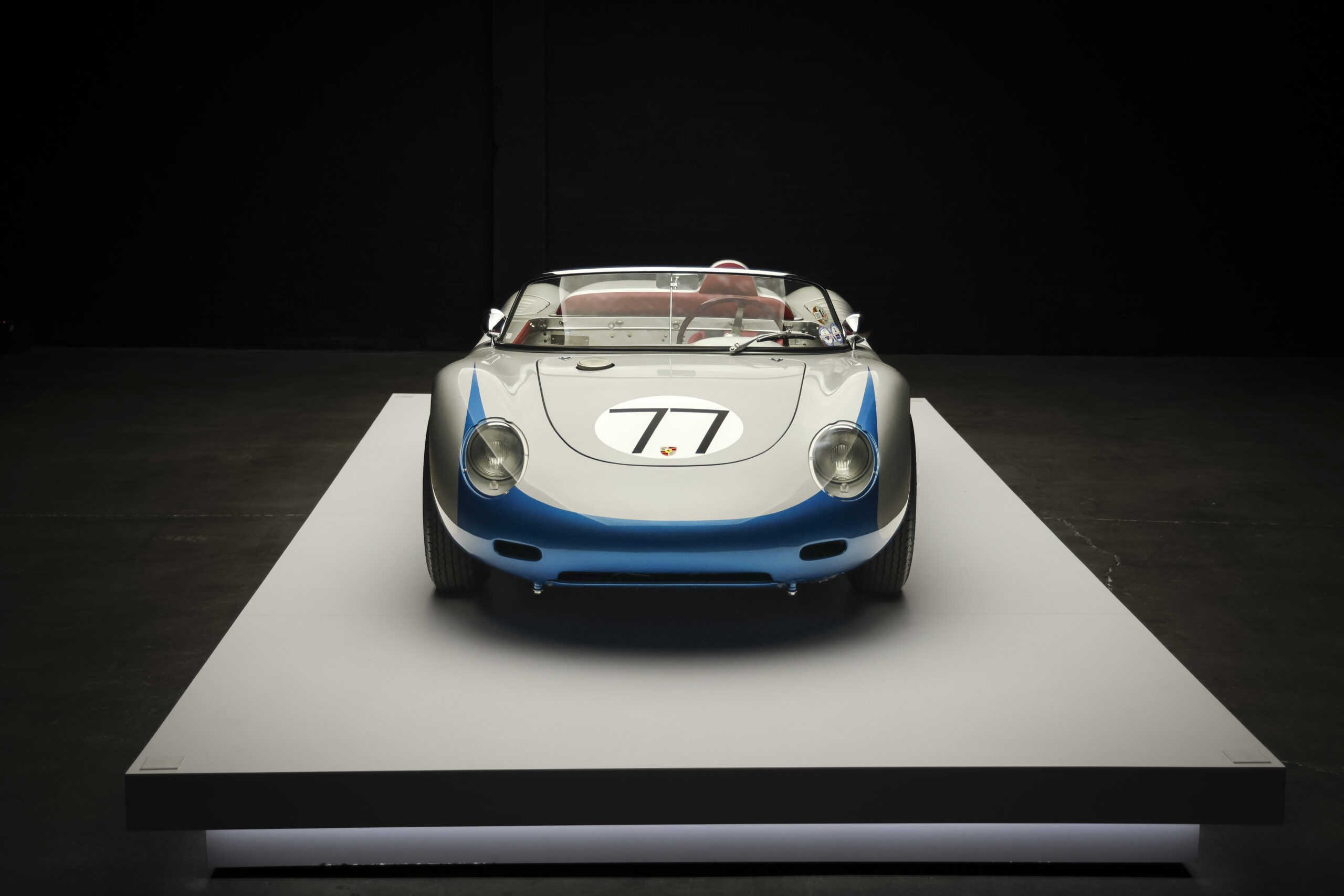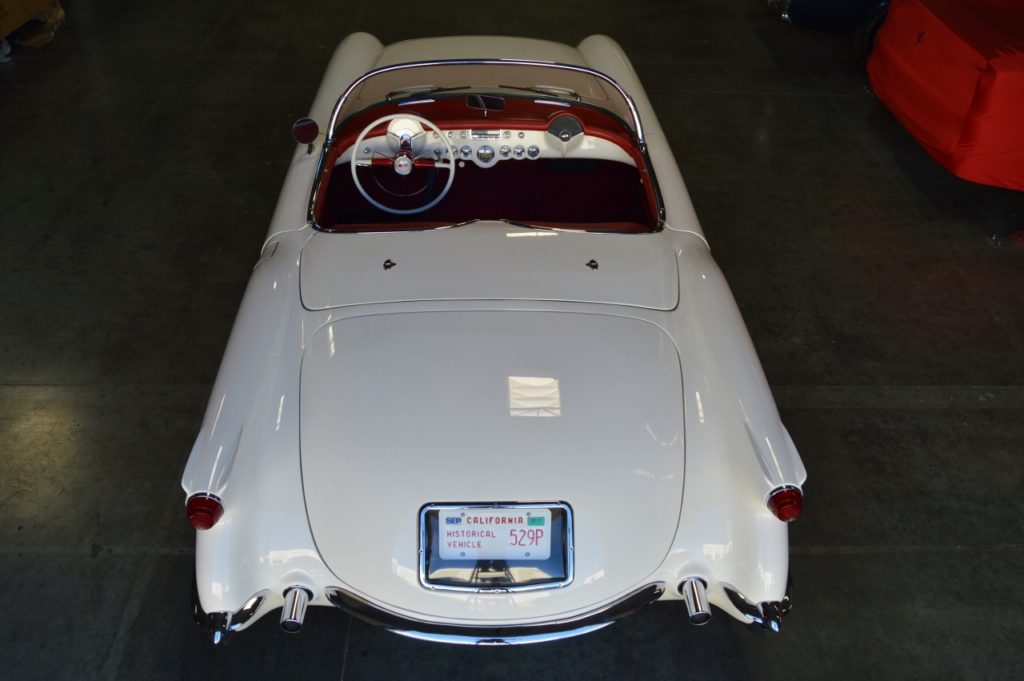
His name remains relatively obscure, even among the higher echelons of the automotive literate. Yet his visionary ideas and unprecedented designs have affected every vehicle that has been produced since his halcyon days. Outside of his practice, he dismantled workplace gender barriers, mingled with Hollywood’s elite, and enterprised an educational institute – amidst numerous separate accomplishments. If you are familiar with the name Karl Benz, then you should know Harley J. Earl’s name next because he is responsible for refining Karl’s creation into the passion-invoking mechanical wonder we adore today.
Earl’s life-story harkens back to the turn of the twentieth century but indeed becomes fully-captivating in the 1920s while a prominent resident of the motor car mecca – Los Angeles. He was born in 1893, the son of a well-established and talented horse-drawn carriage coachbuilder; as times changed, so did the Earl family. Coachbuilding for carriages segued into cars, and Earl’s intelligence prospered under his father’s keen guidance. In the nascent days of the automobile, customized vehicles were exclusively available to the wealthy and famous. As such, Earl himself regularly assisted in the delicately-detailed construction of many bespoke motor carriages for movie stars, starlets, and affluent socialites. With time his adroit artistry and craftsmanship began to garner reputable attention outside of the Golden State.
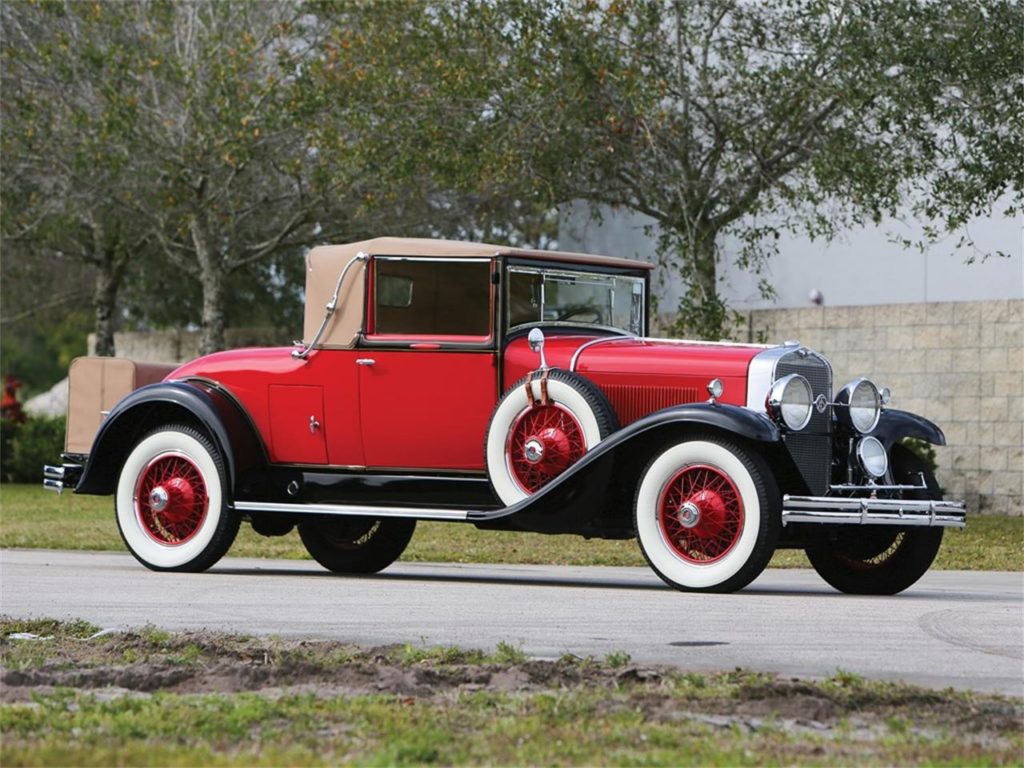
Throughout the early twenties, General Motors – like all manufacturers during this era – were actively vying for innovations that could set their vehicles apart from the massive crowd of competitors. Throughout this period, many organizations chose to focus on sheer mechanical engineering prowess to distinguish themselves. However, Lawrence P. Fisher (General Manager of Cadillac) recognized that one aspect of automotive design – the exterior style – was nearly ubiquitous. Fisher saw the ingenious proficiency to Earls’ unique high-end exterior stylings and extended him a commission to work on Cadillac’s new LaSalle project – he accepted.
By 1928, nearly twenty-seven thousand LaSalle had been produced, leaving Cadillac and GM brass astonished. Immediately an offer of full-time employment as the head of the newly created Art and Color Section was announced to Earl; it was a monumental achievement in the annals of automotive history. Not only was this in-house art workshop preeminent for GM but for any car manufacturer. Before this establishment, no manufacturer had consciously strived to enhance aesthetics for mass-production models.
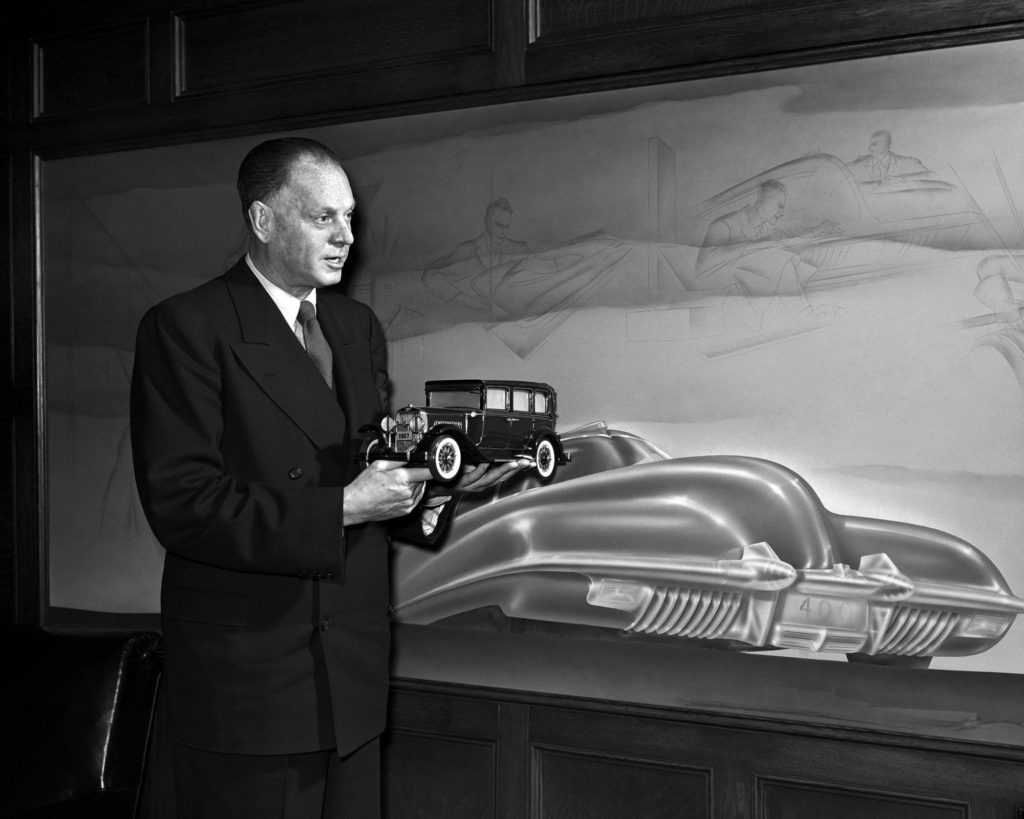
Earl approached this new task with a direct, yet grand, mission, which was to make custom coachbuilt styling widely available. Amid considerable adversity and skepticism from rival manufacturers and fellow employees, the group endured – achieving remarkable success. Eventually renamed the Styling Section in 1937, soon after Alfred Sloan (President of GM) promoted Earl to Vice President of all GM, effectively silencing his detractors.
Substantiating this transition to near-ultimate authority were two particularly novel approaches to branding and sales Earl exercised. In contemporary business marketing, companies will conduct clientele surveys to evaluate the appeal of product configuration and functionality. Earl pioneered this approach in the automotive realm by crafting the concept car.
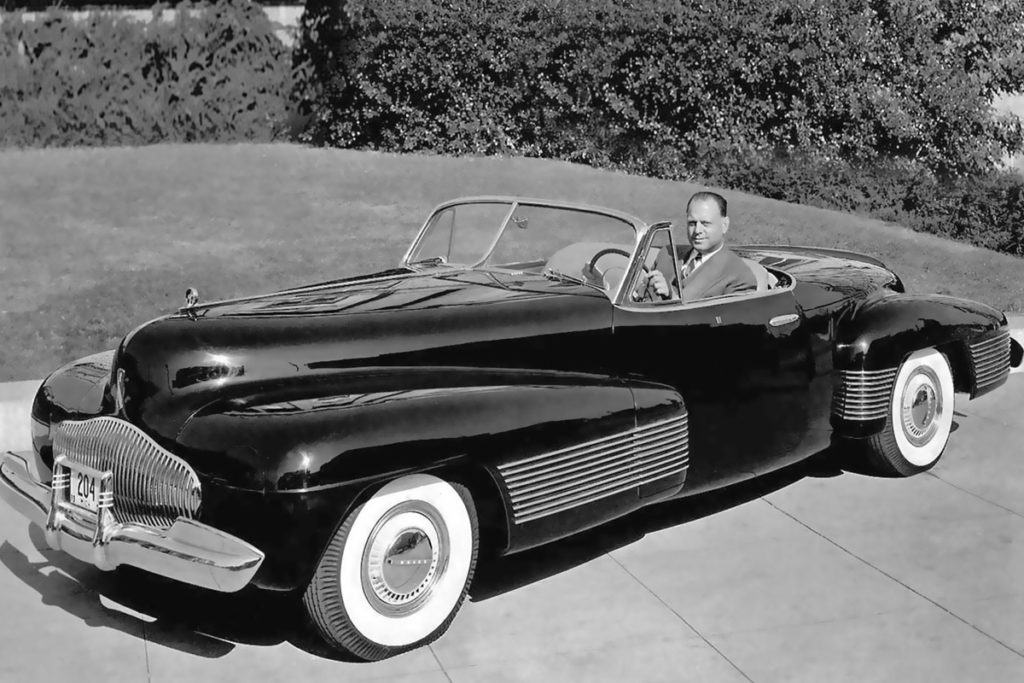
By first modeling raw clay, engineers could later generate a full-scale version of a car (sometimes functional) built from that initial carving. This mock-up was then shown to the public to gauge their enthusiasm concerning key styling traits. From there, the modelers and engineers could adjust the final configurations to resemble what the people desired; thereby increasing the likelihood of a sale. Buick’s Y-Job was the first concept car to begin paving the path to this modern strategy in 1939. As with modern concept cars, the Y-Job focused around introducing viewers to elements, typically materials and features uncommonly seen during that decade.
Some of the fundamental features the Y-Job used to entrance the populace: concealed headlight projectors, electrically operated windows, body-formed bumpers, streamlined door handles, a bespoke grille, and a lack of running boards. Low-slung and sleek, much of the Y-Job’s persona rapidly permeated into various manufacturer’s branding languages. Meanwhile, its cutting-edge technology soon became available as desirable optional-equipment throughout the forties and fifties. Moreover, the project validated Earl’s steps to product composition, proving his penchant for effectively interpreting public trends. So powerful was the response to this idea of a concept car, that GM began implementing the practice yearly. In today’s world, nearly every manufacturer follows a similar procedure for testing new elements and shapes.
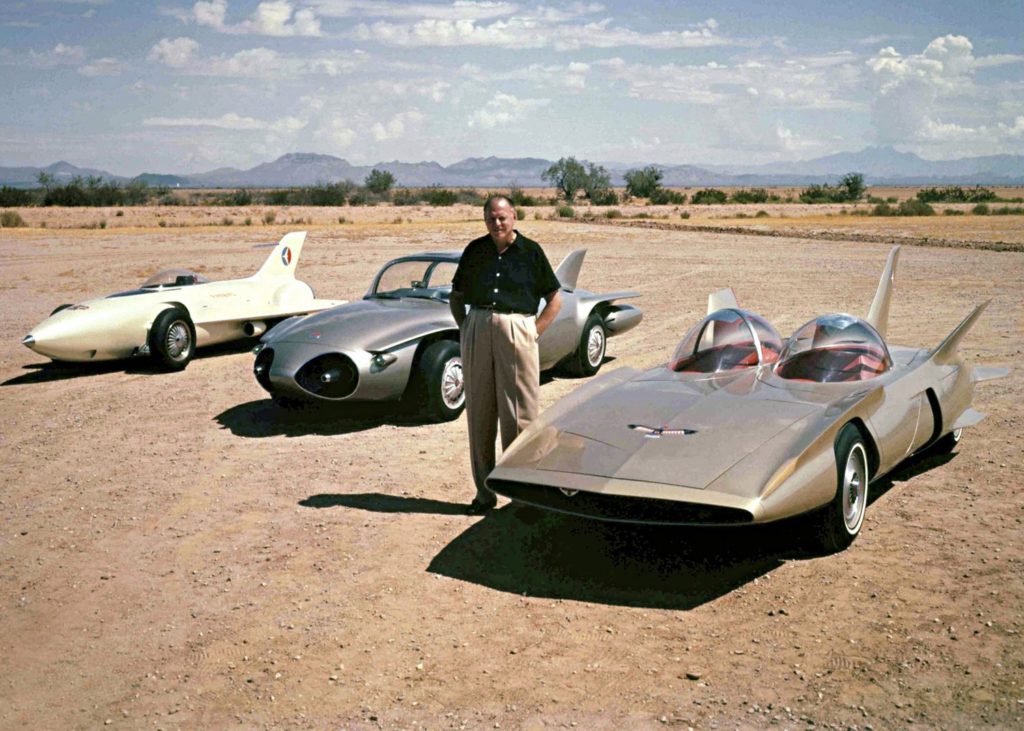
Throughout successive decades, Earl toured the United States with these concept cars using them as promotional tools and promises of things-to-come. By the 1950s cities all over America were petitioning General Motors to hold one of their Autorama events. Crowds of consumers flocked to displays, captivated by their space-age styles. Attendees all hoped to get an early glimpse of next year’s model developments or future schemes. Although most concepts never fully materialize into production vehicles, it was through these studies that Earl’s second novel idea, known as “dynamic obsolescence,” appeared.
The notion of dynamic obsolescence works by introducing a series of small alterations to a car through the addition or removal of individual components within successive years. The intent is to keep a model feeling fresh; although the only changes may be to colors, trim, or revisions to bodywork. Customers craving the latest model with the most up-to-date options or configurations would then be keen to upgrade their current car, generating recurring sales. By the 1950s, Earl’s styling team, now numbering in the thousands, were inventing ever-changing streamlined bodies and bumpers, distinctive grille layouts, heated seats, car radios, trim packages, and much more for yearly model-line enhancements.
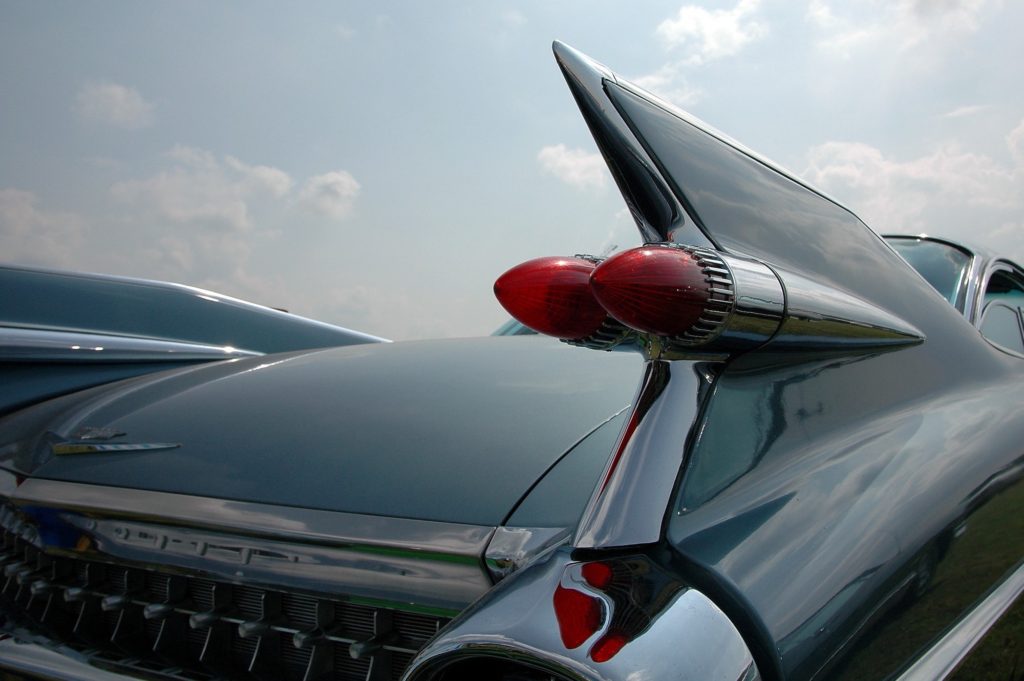
Earl’s aptitude for composition was a similar trait flowing throughout his team. He was meticulous with his hirings, selecting only the brightest and most capable artists to work beside him. GM’s products flourished from this near excessive attention to detail and competitors grew envious, regularly attempting to poach employees for their own outfits. Regardless, Earl was benevolent with his visions of the future and actively labored to disseminate his knowledge amongst the trade. Going so far as to found and fund the Art Center College in Pasadena, California in 1934; a decision which sequentially proved exceedingly beneficial for GM recruitment.
Aside from inspiring future creators and proffering them with an institute to hone their craft in, Earl shattered other business norms. In 1943, he was first to recruit a female automotive designer. Although women were involved in the car world, few to none, had such a prolific position. In addition to that contracting, he shirked cultural resentment towards gays by frequently hiring them during this extremely contentious era. Regardless of critics, Earl did not meddle with their controversy. As such, hirings of this nature continued throughout his tenure at GM, working well to reform a male-dominated industry.
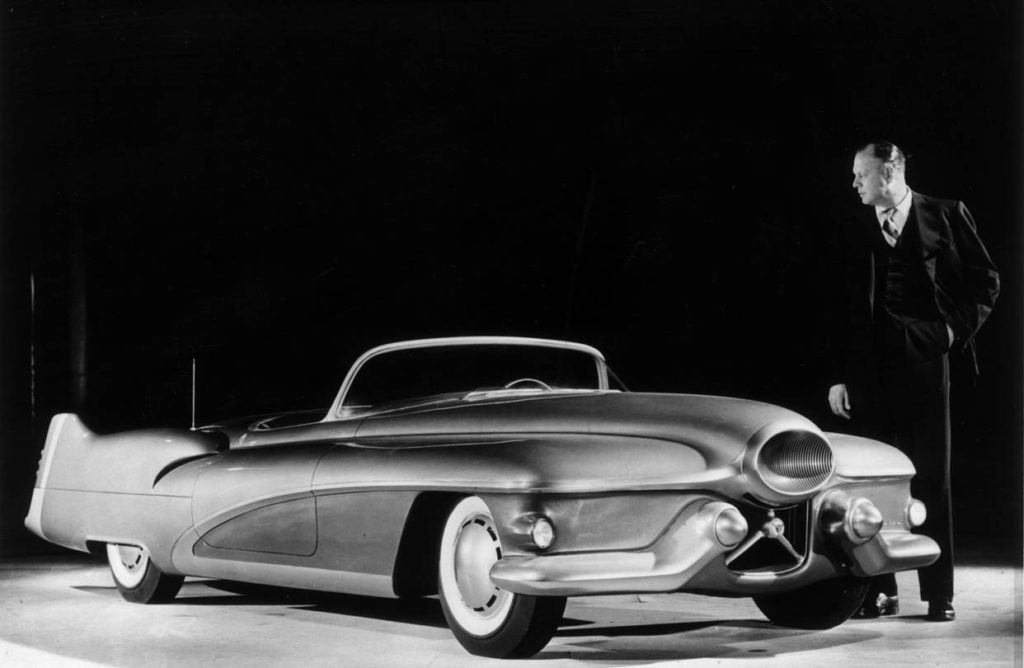
Beliefs and employment selections aside, Earl’s lifestyle itself lead to significant envy and resentment among the industry. Although Earl was a humble man with regards to work – admonishing anyone that attributed his design team’s accomplishments solely to him – he endured glamorous job perks. Regularly at the forefront of unveiling premiers, Earl lavishly wined and dined team members and journalists at GM’s expense. Although high-priced, this entertainment served to establish GM as an aspirational brand. Furthermore, it was not uncommon for him to be accompanied by a rare GM one-off vehicle; often going so far as to have them exclusively transported to events. Despite the excess, GM board members and executives permitted these extravagant expenditures because of the fame and fortune he endowed to the corporation.
Yet among all of his accomplishments, one may reside atop the rest: The Corvette. During a trip to Watkins Glen in 1951, for the unveiling of the Le Sabre concept, Earl studied the crowd and recognized their adoration for the race-participating European sports cars. Realizing that America, specifically GM, was without a contender, he set his team to work on a small, lightweight rival. After two years of development, the first Corvette was presented to the public. To this day, the moniker steadfastly remains an icon of America’s automotive power and competitive spirit.
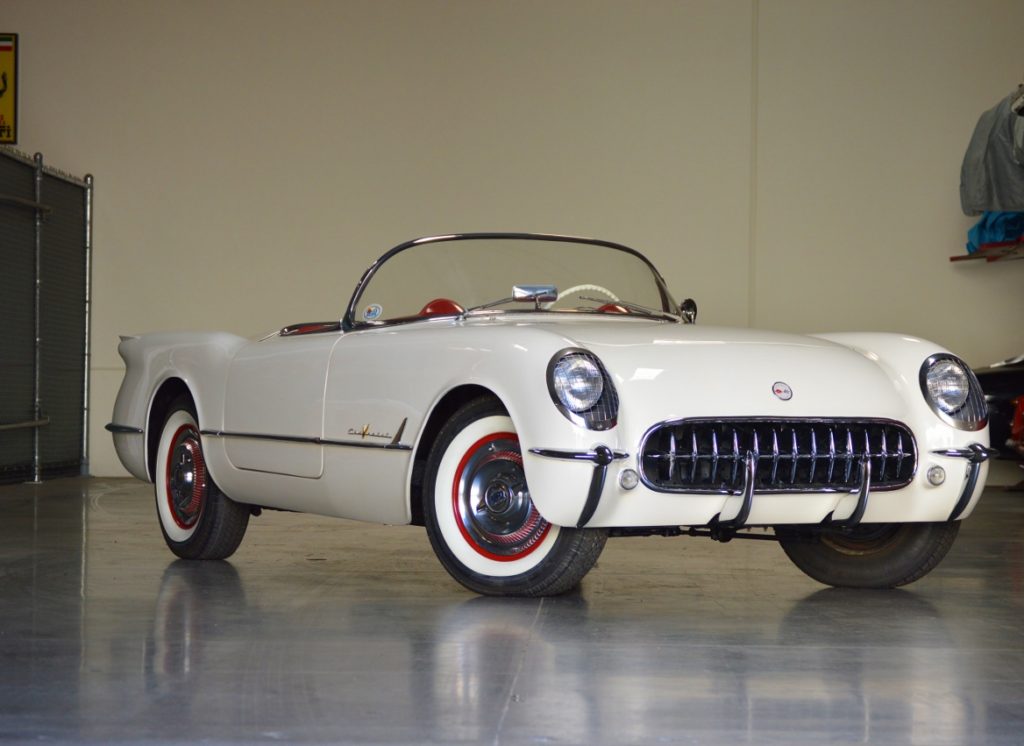
By the release of the Corvette in 1953, Earl’s employment at GM was nearing three decades. Now in his sixties, he resigned from his post five years later. In the wake of the vacuum created by his departure, other sections of GM rushed to secure ownership over the leaderless styling department. His absence not only created a void but provided rival automakers a reprieve they could use to catch up to GM with. His withdraw ushered in a new era of exterior and interior branding for General Motors that was inspired less by dramatic flair and was instead more focused toward perceived performance. Aside from the directional shift in design, many of the equality-practices he implemented were reversed.
As for the man that gifted the world so many innovations that it birthed national car rivalries and a shared international passion for the automobile, he does not receive nearly as much credit as many followers do. He kindled a fledgling concept for future automobile design and in doing so reinvented the car and its industry. He bridged gender divides and established equality at the worlds largest automobile manufacturer during some of the darkest decades for those persons. He gave American’s a champion to snuff foreign contenders on the streets and tracks. When all has been said and done, any true automotive enthusiast should readily know his name, his impact on history, and the ensuing revolutionary automobiles which we cherish.
Christopher Fussner is the Editor-in-Chief here at WOB Cars and MotoringHistory.com. He writes at his home in Los Angeles, manages a car collection, has a genuine passion for cars and racing, a love of Star Wars, and his favorite dinosaur is Carnotaurus. Did we just become best friends?

